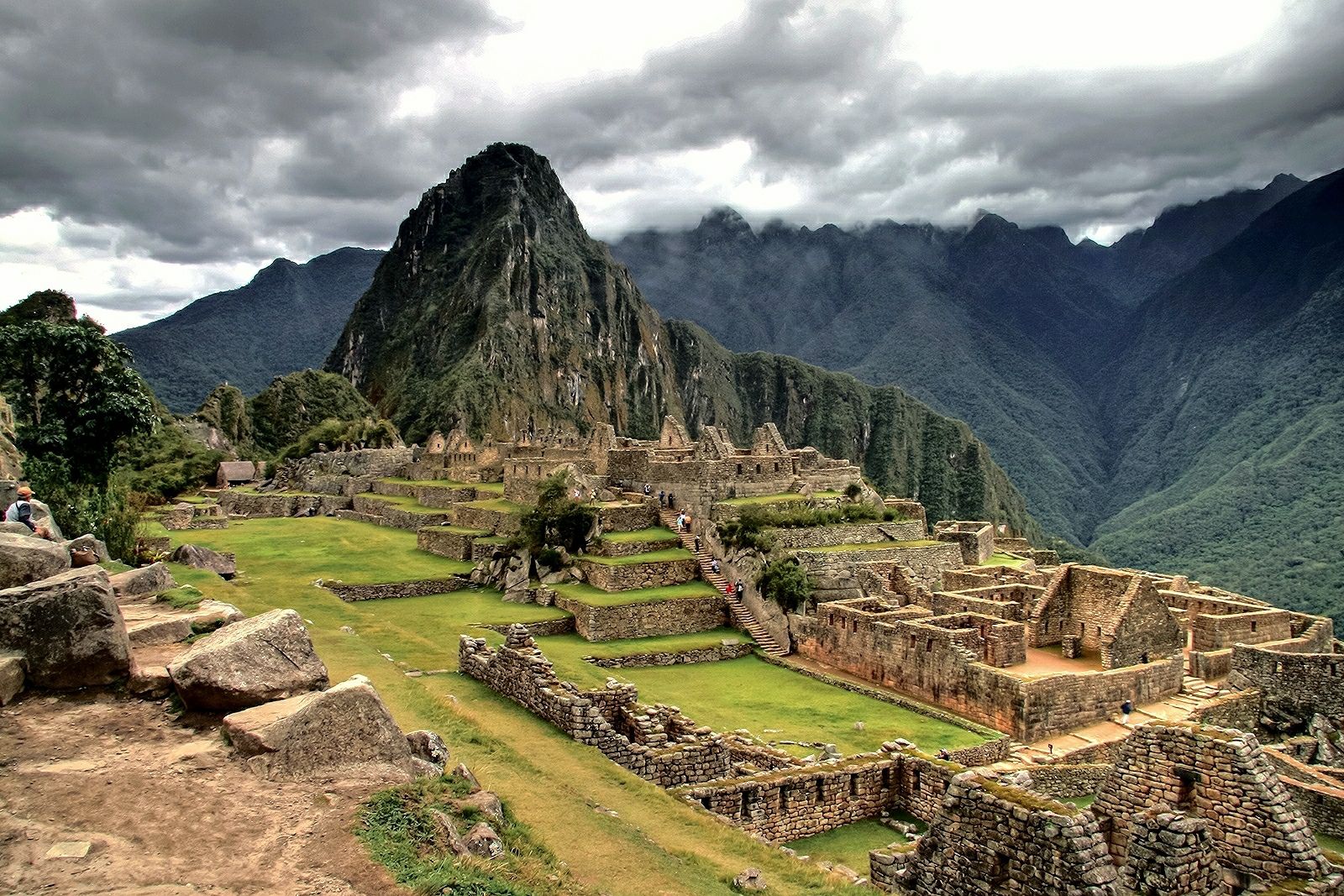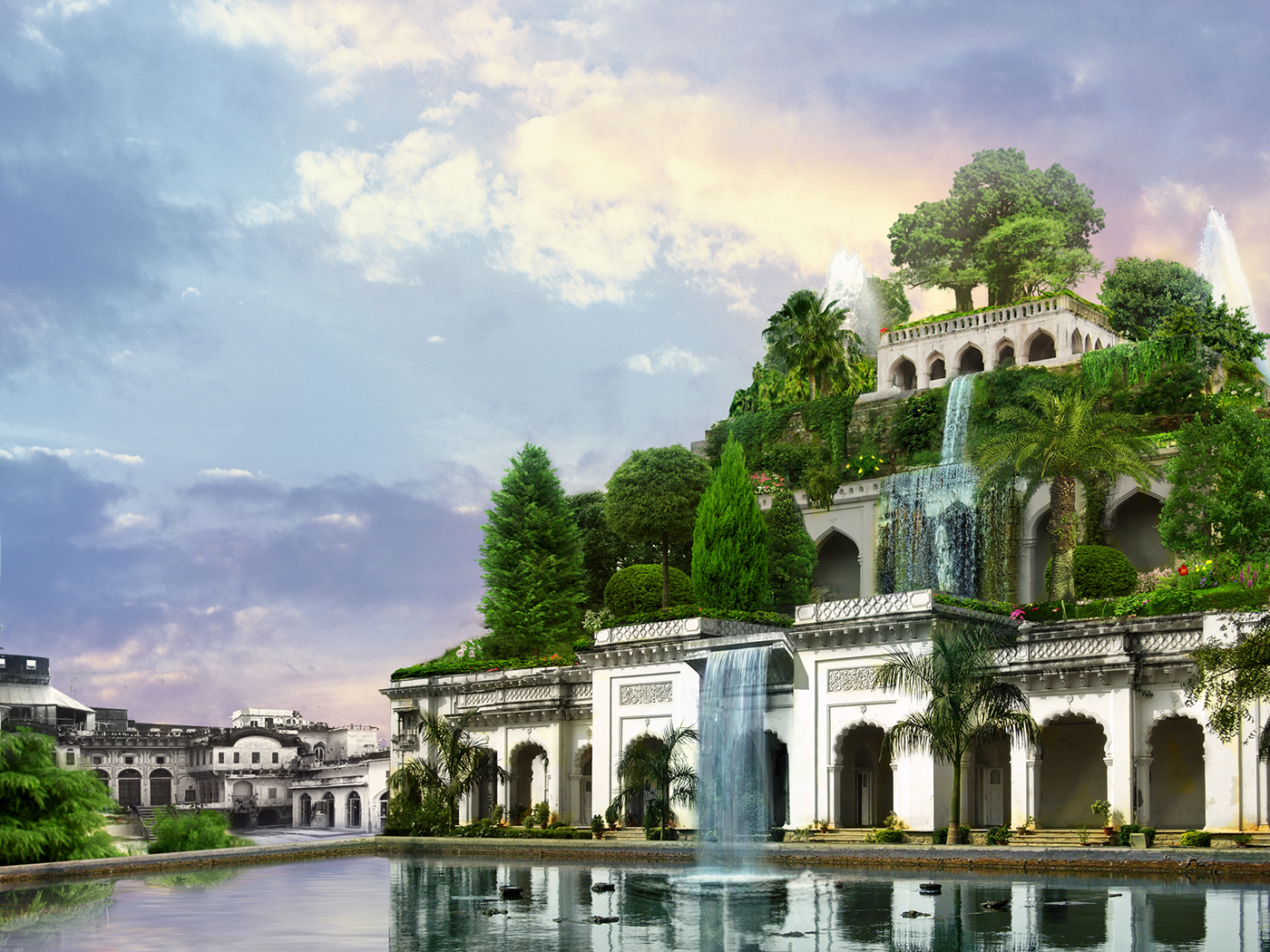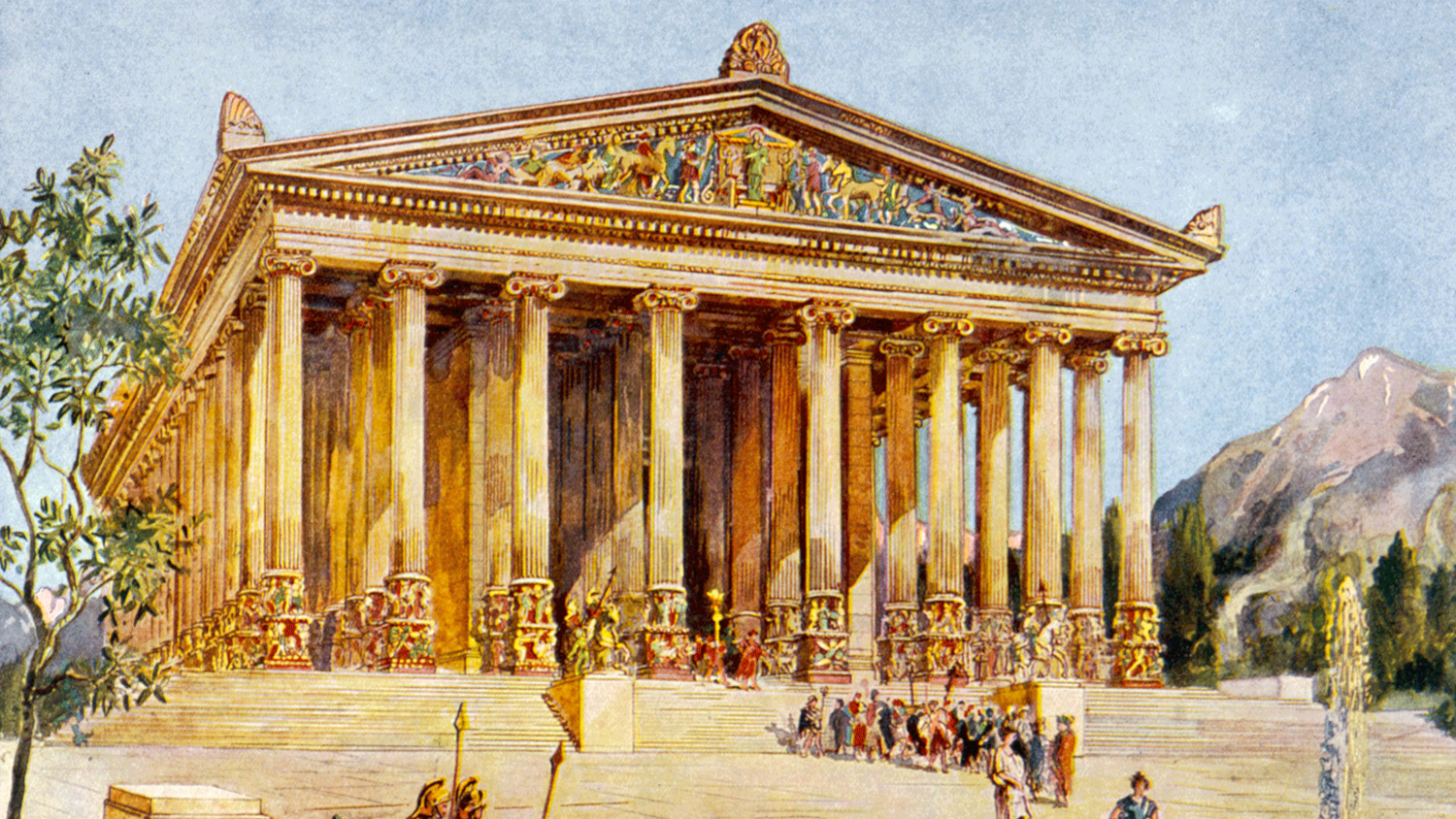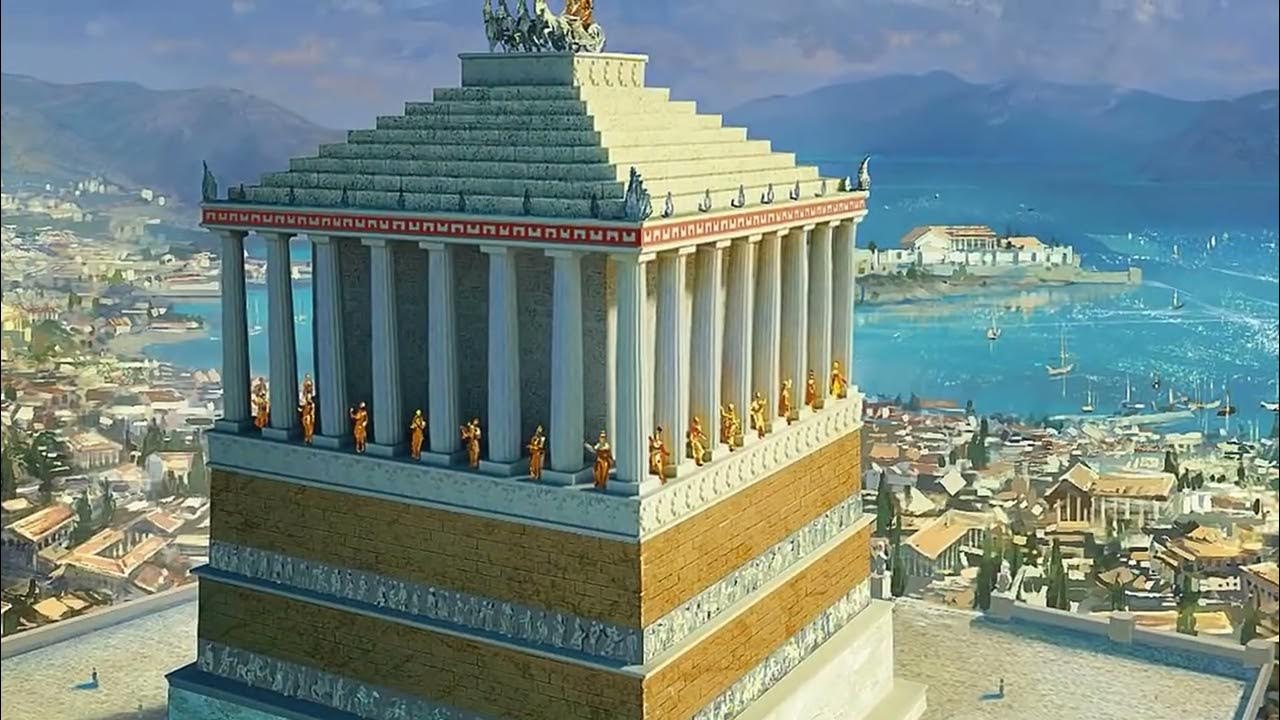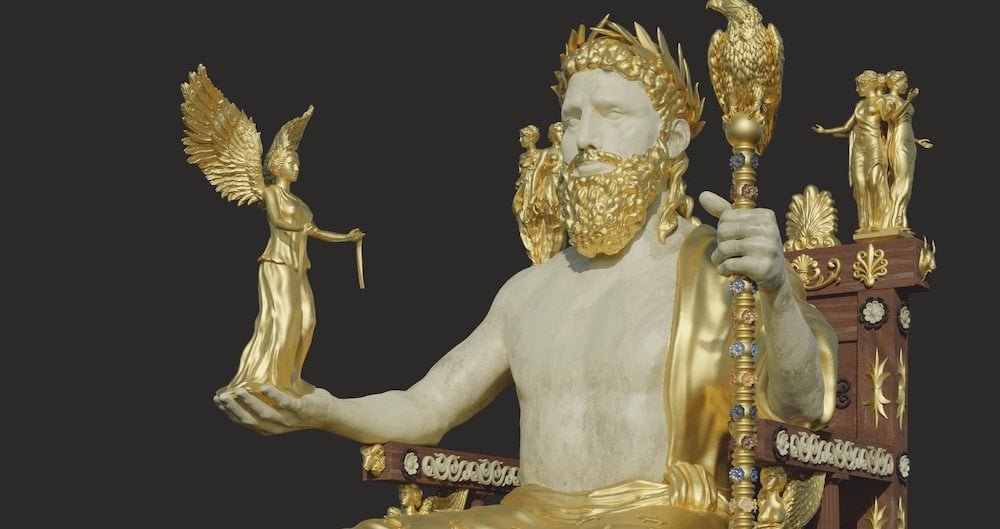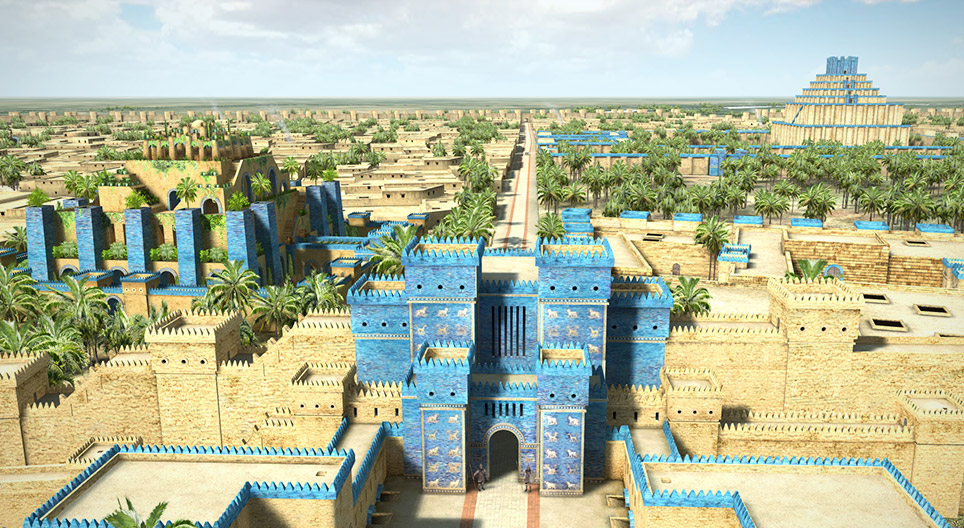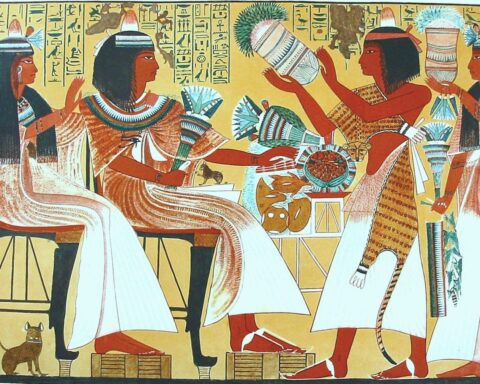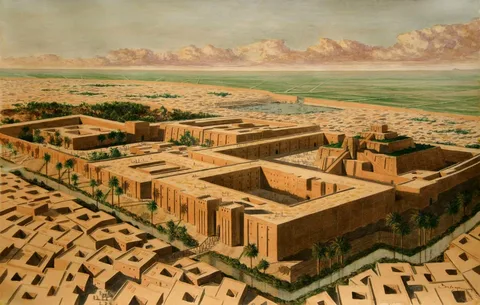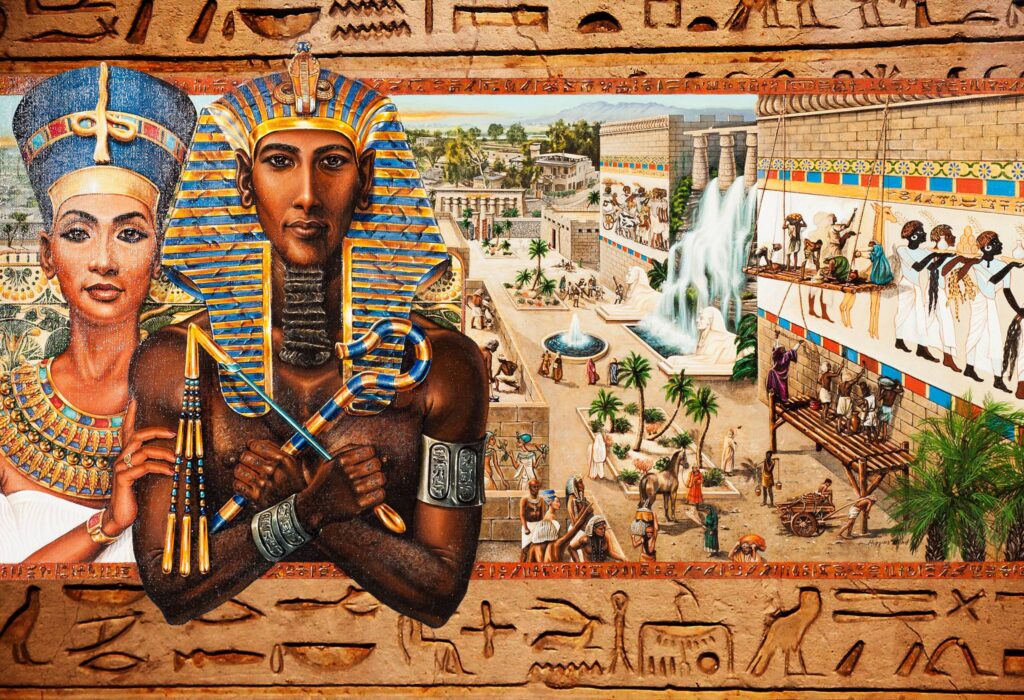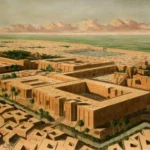The Lost Wonders of the Ancient World
Structural Marvels
The ancient world was home to numerous remarkable structures that were once considered wonders. These edifices not only served as testaments to human ingenuity but also embodied the values and philosophies of their respective cultures.
The Seven Wonders of the Ancient World is a list of remarkable constructions from antiquity, compiled by ancient Greek historians and philosophers. The most famous among them are the Great Pyramid of Giza, the Hanging Gardens of Babylon, the Statue of Zeus at Olympia, the Temple of Artemis at Ephesus, the Mausoleum at Halicarnassus, the Colossus of Rhodes, and the Lighthouse of Alexandria.
The Great Pyramid of Giza, built around 2580 BC, is considered one of the most impressive architectural feats in history. Its massive structure was constructed using approximately 2.3 million stone blocks, each weighing around 2.5 tons. The pyramid’s original height was around 146 meters, making it the tallest man-made structure for over four millennia.
The Hanging Gardens of Babylon were said to be a marvel of engineering and horticulture, with lush greenery covering the walls of a massive stepped tower. According to legend, King Nebuchadnezzar II built this magnificent edifice around 600 BC as a gift to his wife, Queen Amytis.
The Statue of Zeus at Olympia was an enormous statue depicting the Greek god Zeus sitting on a throne, sculpted by the famous artist Phidias. It took nearly twelve years to complete and stood over 12 meters tall. Unfortunately, it was destroyed in a fire around 475 BC.
The Temple of Artemis at Ephesus, built between 546-550 BC, is often considered one of the most impressive examples of ancient Greek architecture. This massive temple, dedicated to the goddess Artemis, was over 160 meters long and had 127 columns.
The Mausoleum at Halicarnassus, commissioned by King Mausolus around 350 BC, was a grand tomb for himself and his wife. This majestic structure featured marble statues on its pedestal and an intricately carved frieze. Unfortunately, it collapsed in the earthquake of 1304 AD.
The Colossus of Rhodes was an enormous bronze statue depicting Helios (the Greek god of the sun) built by the ancient Greeks between 292-280 BC. At over 30 meters tall, it became one of the tallest statues ever constructed at that time and took around twelve years to finish.
The Lighthouse of Alexandria stood on Pharos island in Egypt, near Alexandria’s harbor. Built during Ptolemy II’s reign (285-246 BC), this magnificent structure served as a beacon for ships at sea, standing over 120 meters high. However, earthquakes and storms eventually destroyed it.
The Statue of Zeus at Olympia
The Statue of Zeus at Olympia is one of the most famous lost wonders of the ancient world. It was a gigantic statue of the Greek god Zeus, crafted by the renowned artist Phidias in the 5th century BC.
The statue stood over 12 meters tall and was made entirely out of gold and ivory. The gold skin and ivory flesh were skillfully combined to give the appearance of a majestic deity, while its drapery and robes added to the overall regal aura.
The statue was so impressive that it became one of the Seven Wonders of the Ancient World. It was built at the temple of Zeus in Olympia, Greece, which was a major site of worship and celebration for the ancient Greeks.
In 475 BC, Phidias completed the colossal statue after working on it for several years. Unfortunately, its history took a darker turn when the Roman general Sulla looted much of the statue’s gold to fund his campaigns in Greece.
Eventually, the statue was moved to Constantinople by the Romans and then later destroyed during an earthquake in 475 AD. The exact cause of its destruction remains unclear, but it is believed that a series of earthquakes led to the statue’s decline and eventual disappearance.
The loss of the Statue of Zeus at Olympia was a devastating blow to art historians and archaeologists alike. Despite extensive excavations and searches, no remnants of the original statue have been discovered. However, its influence can still be seen in many other famous works of ancient Greek art.
The legacy of the Statue of Zeus at Olympia continues to inspire artists, architects, and designers today. It serves as a reminder of the ingenuity, creativity, and grandeur that characterized the ancient civilizations of Greece and Rome.
The largest statue ever built, created by Phidias and located in Greece.
The largest statue ever built was the gigantic Colossus of Rhodes, created by the renowned Greek sculptor Chares of Lindos, not Phidias. It was a massive bronze statue of the Greek god Helios, erected in the Greek city of Rhodes between 292 and 280 BCE.
The Colossus of Rhodes was built to celebrate the victory of Rhodes over the ruler of Cyprus, Antigonus I Monophthalmus. The massive statue stood at an incredible over 100 feet (30 meters) tall, making it one of the tallest statues in the ancient world.
The Colossus was designed and constructed by the renowned Greek architect Chares of Lindos, who worked with other skilled artisans to bring the massive bronze statue to life. The Colossus was made up of several bronze plates, supported by an iron framework, which provided stability and strength.
The construction of the Colossus took many years to complete, but unfortunately, it did not last long after its completion. A massive earthquake struck Rhodes in 226 BCE, causing significant damage to the statue. In 226 BCE, a powerful earthquake struck the island of Rhodes, destroying much of the city and damaging the magnificent Colossus.
The Colossus stood for over 50 years before it was toppled by an earthquake. The remains of the statue lay on the ground for many centuries, serving as a reminder of the engineering prowess and artistic skill of ancient Greek civilization.
Although we cannot see the original Colossus today, numerous reconstructions and models have been made over the centuries, allowing us to appreciate its sheer scale and majesty. The lost wonder still inspires awe and reverence for the creativity and technical expertise of our ancestors.
The story of the Colossus serves as a poignant reminder of the transience of human creations and the enduring power of art and engineering in shaping our collective history.
The Hanging Gardens of Babylon
The Hanging Gardens of Babylon, one of the Seven Wonders of the Ancient World, is an enigmatic and intriguing archaeological site that has captivated historians and travelers for centuries. The exact location of this marvel of engineering is still debated among experts, with some attributing it to the ancient city of Babylon in modern-day Iraq, while others believe it may have existed in Persia (modern-day Iran).
According to legend, the Hanging Gardens were built by the Neo-Babylonian King Nebuchadnezzar II around 600 BC as a gift for his wife, Queen Amytis. She missed the green hills and valleys of her homeland, Media (modern-day Iran), and longed for a place where she could see lush vegetation year-round.
The story goes that Nebuchadnezzar II commissioned the finest engineers and architects of his time to build an inverted garden in the midst of the arid desert landscape surrounding Babylon. They allegedly constructed a complex system of arches, vaults, and canals that supported a lush oasis, providing a cool and verdant paradise for Queen Amytis to enjoy.
The Hanging Gardens are said to have been a massive structure, measuring around 100 feet (30 meters) high and covering an area of approximately 250 square feet (23,000 square meters). The sheer scale and engineering prowess required to create such a monumental project would have been astounding for its time.
Despite the extensive accounts of the Hanging Gardens’ beauty and grandeur in ancient texts, including those by the Greek historian Berossus and the Roman writer Diodorus Siculus, no definitive proof of their existence has been discovered. This lack of tangible evidence has fueled speculation about their authenticity, with some dismissing them as a myth or exaggeration.
The site where the Hanging Gardens might have stood remains a mystery to this day, with several locations in Iraq and Iran being proposed by archaeologists as possible candidates for excavation. In recent years, satellite imaging technology has revealed potential archaeological sites that may hold clues to the gardens’ location and appearance. However, more extensive excavations are needed to confirm these findings and unlock the secrets of one of history’s most enigmatic Wonders.
A marvel of engineering and horticulture, built by the NeoBabylonian king Nebuchadnezzar II.
The Hanging Gardens of Babylon is considered a marvel of engineering and horticulture, built by the Neo-Babylonian king Nebuchadnezzar II. Located in present-day Hillah, Babil Governorate, Iraq, this ancient wonder was said to be one of the Seven Wonders of the Ancient World.
According to legend, the Hanging Gardens were constructed for Nebuchadnezzar’s wife, Queen Amytis, who missed the green hills and valleys of her homeland. The king commissioned his engineers to build a series of arches that would support a vast garden, which was said to be over 100 feet high.
The gardens themselves were reportedly planted with trees and shrubs from various parts of the ancient world, including cedar, cypress, and palm trees. A complex system of irrigation was developed to sustain the plants in this arid region.
Despite its impressive reputation, there is ongoing debate among historians about whether the Hanging Gardens actually existed or were merely a mythical creation. Archaeological evidence is sparse, and some researchers believe that the accounts of the gardens may have been exaggerated over time.
In any case, the concept of the Hanging Gardens has captivated people for centuries, representing a remarkable blend of engineering ingenuity, horticultural expertise, and architectural innovation.
Key Features of the Hanging Gardens
- Location: Present-day Hillah, Babil Governorate, Iraq
- Commissioned by: Neo-Babylonian king Nebuchadnezzar II
- Purpose: To provide a garden for Queen Amytis to remember her homeland
- Description: A series of arches supporting a vast garden over 100 feet high
- Irrigation system: Complex and sophisticated, using water from the Euphrates River
Architectural Innovations
The ancient world was home to numerous architectural innovations that have been lost over time. These structures were often impressive, awe-inspiring, and highly advanced for their era. Some of the most notable examples include the Hanging Gardens of Babylon, the Temple of Artemis at Ephesus, and the Statue of Zeus at Olympia.
The Hanging Gardens of Babylon, one of the Seven Wonders of the Ancient World, were said to have been built by King Nebuchadnezzar II for his wife, Queen Amytis. The gardens were described as a marvel of engineering, featuring lush greenery and exotic plants that seemed to defy gravity due to their elevated location.
However, despite numerous excavations and excavators’ claims of discovering the site, the Hanging Gardens remain one of the most enduring enigmas of ancient history. Archaeologists have proposed various theories about their construction, including the use of a complex system of arches and aqueducts to supply water to the gardens.
The Temple of Artemis at Ephesus was another architectural wonder that has been lost to time. This massive temple was built to honor the Greek goddess Artemis and was renowned for its impressive size and grandeur. The temple featured a massive platform, 115 meters long and 55 meters wide, and was adorned with over 127 columns.
Excavations at the site have revealed some of the temple’s remains, including several foundation stones and a few scattered columns. However, much of the temple remains buried beneath the ruins of the city of Selçuk, which now lies on top of the ancient site.
The Statue of Zeus at Olympia was another wonder that has been lost over time. This gigantic statue of the Greek king Zeus was crafted by the famous sculptor Phidias and took several years to complete. The statue stood approximately 12 meters tall and was adorned with gold, ivory, and precious stones.
According to legend, the statue featured a gleaming golden aura that seemed to radiate from its very presence. Unfortunately, the statue’s remains were largely destroyed during the Roman period, and today only fragments of its foundation and a few scattered relics remain as testament to its former glory.
The ancient Greeks and Romans recognized the significance of these architectural innovations, often incorporating elements of their design into their own buildings and structures. As we reflect on the lost wonders of the ancient world, we are reminded of the ingenuity and creativity that our ancestors employed in shaping the built environment.
The Temple of Artemis at Ephesus
The Temple of Artemis at Ephesus was one of the Seven Wonders of the Ancient World, a magnificent structure dedicated to the Greek goddess Artemis. Built in present-day Turkey during the 6th century BC, this massive temple stood as a testament to the engineering and artistic skills of the ancient Greeks.
The construction of the Temple of Artemis was commissioned by King Croesus of Lydia to commemorate his victory over the Persians. The project took 12 years to complete and cost an estimated 365 tons of gold. It is believed that more than 100 slaves worked on the temple, with many of them being skilled laborers from Egypt.
The temple was an enormous structure measuring 225 feet long, 450 feet wide, and 180 feet tall. Its facade featured 127 massive stone columns, each weighing over 20 tons, which supported a flat roof made of marble and cedar wood. The columns were decorated with intricate carvings depicting mythological scenes.
The Temple of Artemis was not just an architectural wonder but also an important cultural site. It served as the center of worship for the followers of Artemis, who would gather there to make sacrifices and offerings to their goddess. The temple’s precincts were also used for festivals and processions, with people from all over the region participating in these events.
Unfortunately, like many other ancient structures, the Temple of Artemis at Ephesus suffered a series of disasters that led to its eventual destruction. A massive fire caused by earthquakes destroyed much of the temple in 356 BC. The subsequent rebuilding process was hindered by power struggles and conflicts between different factions.
The final blow came when Emperor Constantine ordered the construction of a new cathedral in Constantinople (modern-day Istanbul), which diverted resources away from the restoration of the Temple of Artemis. By the 5th century AD, the temple had largely fallen into ruin and was eventually abandoned.
Today, only a few columns and foundation stones remain from the original temple complex. Excavations have uncovered some of the original building materials, including marble fragments and inscriptions that provide valuable insights into its history. Despite being lost to time, the legacy of the Temple of Artemis at Ephesus continues to inspire awe and curiosity in people around the world.
The significance of the Temple of Artemis can be appreciated through its architectural features:
- Colonnades: The temple’s facade was adorned with 127 massive stone columns, showcasing the engineering skills and artistic flair of the ancient Greeks.
- Intricate carvings: The columns were decorated with intricate carvings depicting mythological scenes, highlighting the creativity and attention to detail of the craftsmen involved.
- Marble and cedar wood: The use of high-quality materials like marble and cedar wood added an extra layer of grandeur and elegance to the structure.
The Temple of Artemis at Ephesus was also a cultural icon, with its significance extending beyond architecture:
- Worship center: The temple served as the center of worship for followers of Artemis, highlighting its importance in ancient Greek religion.
- Festivals and processions: The precincts were used for festivals and processions, emphasizing the role of the temple in community life.
One of the largest temples in the ancient world, known for its impressive size and ornate decorations.
The temple that stands out as one of the largest in the ancient world is the Temple of Artemis at Ephesus, located in present-day Turkey. Built to honor the Greek goddess of the hunt, Artemis, this massive structure was considered a wonder of the ancient world.
Construction on the temple began around 550 BC, during the reign of King Croesus of Lydia, and was finally completed in 515 BC after a period of nearly two decades. The temple was built to replace an earlier structure that had been destroyed by the Cimmerians, a nomadic people who had invaded Asia Minor.
The Temple of Artemis at Ephesus was a massive structure measuring around 225 feet (68 meters) long and 450 feet (137 meters) wide, with 127 columns that stood as high as 60 feet (18 meters). The temple’s design was inspired by the Parthenon in Athens, but on a much larger scale. It featured two rows of Doric columns at the entrance, while the main hall had Ionic columns.
The ornate decorations of the temple were renowned throughout the ancient world for their beauty and craftsmanship. The pediments, the triangular spaces above the pillars, were adorned with sculptures of Artemis and other mythological figures. The friezes, or horizontal bands, around the building featured intricate carvings of various animals and mythological scenes.
The temple’s entrance was marked by a massive stone statue of Artemis, which stood as high as 60 feet (18 meters). This imposing figure was made of gold and precious gems, and was said to have been worth a small fortune. The statue depicted Artemis as a huntress, complete with a bow and arrow.
Unfortunately, the Temple of Artemis at Ephesus suffered a series of misfortunes over the centuries. In 262 AD, it was destroyed by a mob of Christians who saw it as a symbol of paganism. The temple lay in ruins for many years, until its remains were rediscovered in the 16th century and excavated in the 19th century.
The Mausoleum at Halicarnassus
The Mausoleum at Halicarnassus was one of the Seven Wonders of the Ancient World, a collection of remarkable constructions from antiquity that were considered the most impressive achievements of their time. Built around 350 BCE as a tomb for King Mausolus of Caria, a Persian satrap or governor, it stood near the city of Halicarnassus on the Aegean coast of modern-day Turkey.
Designed by four Greek architects – Satyrus, Theodorus, and Pytheas, along with Chersiphron, who constructed the temple of Artemis at Ephesus – the Mausoleum was an enormous structure that measured 120 feet long and 100 feet wide. Its base was made of marble from nearby quarries, while its facade featured a series of columns topped by an ornate pyramid.
The most striking feature of the Mausoleum was its colossal statue of King Mausolus himself, which sat atop the structure at an impressive height of 50 feet. The statue was crafted from bronze sheets and was adorned with gold and precious stones. Two additional statues of the king’s wife, Queen Artemisia, stood at either side.
Inside the mausoleum lay a magnificent chamber where the remains of King Mausolus were laid to rest. The chamber itself featured four marble sculptures depicting the mythological figures of Ammon, Dionysus, Hera, and Aphrodite. Surrounding the tomb were intricately carved statues that depicted scenes from the king’s life and military conquests.
The Mausoleum at Halicarnassus suffered a series of earthquakes in the 12th century CE, which caused it to collapse. The remains of the structure lay scattered for centuries until the early 19th century when an archaeological team was formed to excavate the site. Although many of its components have been lost or destroyed over time, today’s tourists can still marvel at the impressive foundation and a few remaining statues, serving as reminders of one of the greatest architectural achievements in history.
The legacy of the Mausoleum has inspired countless other tombs and monuments throughout history, such as the Taj Mahal in India and the United States’ own Arlington National Cemetery. Despite being ‘lost’ for centuries, its historical significance remains strong, and it will forever be remembered among the Seven Wonders of the Ancient World.
A grand tomb built for King Mausolus, famous for its stunning sculptures and massive structure.
The Mausoleum at Halicarnassus, built for King Mausolus, was one of the most impressive structures in ancient Greece, renowned for its breathtaking sculptures and colossal architecture.
Built by the Greek architects Satyrus and Pythius around 350 BCE, the mausoleum was a grand tomb that served as the final resting place for King Mausolus, a local satrap who ruled under the Persians. The king’s wife, Queen Artemisia, commissioned the construction of the monument in his memory after his death.
The mausoleum was designed to be an enormous structure that stood over 120 feet tall and was adorned with ivory, gold, and precious stones. The massive building was a testament to the engineering prowess of the ancient Greeks, featuring 36 giant columns and intricate carvings depicting scenes from Greek mythology.
The most striking feature of the Mausoleum at Halicarnassus were its four enormous bronze statues on top of the structure, each depicting a female figure. The sculptures were crafted by famous artists such as Bryaxis, Timotheus, and Scopas, who were renowned for their skill in creating life-like representations of figures.
The interior of the mausoleum was also adorned with intricate carvings and stunning mosaics depicting scenes from King Mausolus’s life. The most notable feature of the interior was a massive statue of King Mausolus himself, crafted by the same artists who created the bronze statues on top.
Unfortunately, despite its grandeur and beauty, the Mausoleum at Halicarnassus was not spared from the ravages of time. In 1522 CE, it was damaged by an earthquake and later plundered for its valuable building materials, leaving behind only a few remnants of the original structure.
Today, the remains of the Mausoleum at Halicarnassus are recognized as one of the Last Wonders of the Ancient World, serving as a testament to the ingenuity and artistry of the ancient Greeks. While only a small portion of the original structure has survived, its legacy lives on in the numerous reproductions and adaptations that can be seen in museums and archaeological sites around the world.
Lost Treasures
Ancient Artifacts
The concept of ancient artifacts is one that has captured the imagination of people for centuries. These relics of the past are tangible links to a bygone era, offering us glimpses into the lives and cultures of civilizations long since vanished. The lost wonders of the ancient world are perhaps some of the most fascinating examples of these artifacts.
One of the most famous and enduring stories of ancient lost treasures is that of Atlantis, described by the Greek philosopher Plato as a powerful and advanced civilization that existed in the distant past but was ultimately lost to the sea. Despite extensive searches, the existence of Atlantis remains a topic of debate among scholars and enthusiasts alike.
Another example of an ancient wonder is the Hanging Gardens of Babylon, said to have been built by Nebuchadnezzar II for his wife Queen Amytis. This breathtaking feat of engineering was described as a magnificent series of gardens suspended high above the ground, supported by a complex system of arches and aqueducts.
One of the Seven Wonders of the Ancient World is the Statue of Zeus at Olympia, built by the famous Greek sculptor Phidias in the 5th century BCE. This colossal statue depicted the king of the gods sitting on his throne, with the goddess Nike (Victory) standing beside him. It was considered a masterpiece of ancient art and engineering.
The Colossus of Rhodes is another example of an ancient wonder that has captured the imagination of people for centuries. This massive bronze statue of the Greek god Helios stood over 100 feet tall, making it one of the tallest statues in the world at the time of its construction. Unfortunately, a powerful earthquake toppled the statue in the 3rd century BCE.
The Temple of Artemis at Ephesus is another ancient wonder that has been lost to time. This massive temple was built to honor the Greek goddess Artemis and was considered one of the most impressive architectural feats of its time. However, it was destroyed by fire and later dismantled for its valuable marble components.
The Mausoleum at Halicarnassus is another ancient wonder that has been lost over time. This massive tomb was built to honor King Mausolus, a satrap (governor) of the ancient Persian Empire. The mausoleum featured an impressive array of sculptures and architectural elements, including a stunning marble statue of the king and queen.
These examples of ancient lost wonders are a testament to the ingenuity and creativity of our ancestors, who were able to build structures that stood the test of time despite the passage of centuries. Each one offers us a glimpse into the lives and cultures of people from different eras and civilizations, allowing us to learn about their history and appreciate their art.
The significance of ancient artifacts lies not only in their historical value but also in their cultural relevance. They serve as a bridge between past and present, connecting us with our shared human experience. By studying these relics, we can gain insights into the values, traditions, and practices of people from different cultures, enriching our understanding of the world around us.
Moreover, the study of ancient artifacts has led to significant advances in various fields, including archaeology, anthropology, history, art, architecture, engineering, and conservation. By analyzing these relics, researchers can reconstruct historical events, identify cultural patterns, and develop new techniques for preservation and restoration.
Finally, the discovery and excavation of ancient artifacts often spark renewed interest in history and culture, inspiring people to learn more about their past and its relevance to their present lives. This heightened interest has contributed significantly to the growth and development of heritage tourism worldwide, generating economic benefits and fostering cross-cultural exchange among nations.
As we continue to explore and discover new ancient artifacts, we are reminded that there is still much to be learned from our shared human history. These relics of the past serve as a powerful reminder of our collective cultural heritage, offering us insights into the triumphs and struggles of people who have come before us.
The Gold Statue of Zeus
The Gold Statue of Zeus at Olympia was a colossal statue of the Greek god Zeus, situated in the temple of Zeus at Olympia, Greece. It is considered one of the Seven Wonders of the Ancient World and a masterpiece of ancient Greek art.
The statue was commissioned by the Hellenistic king Antigonus I Monophthalmus and built under the supervision of the architect Phidias around 466-456 BCE. The construction process took about a decade to complete, with thousands of skilled workers employed in its creation.
The statue depicted Zeus sitting on a throne, wearing a wreath of olive leaves on his head and holding a scepter in one hand and a small statue of the goddess Nike in the other. It was crafted from gold and ivory, with the skin texture and facial features created from marble. The statue was enormous, standing at around 12-15 meters tall.
The temple of Zeus at Olympia, where the statue was housed, was also an architectural masterpiece. Designed by the Greek architect Libon, it featured a long processional way lined with statues of various gods and goddesses, as well as the famous throne of Olympian Zeus.
The Golden Statue of Zeus was renowned not only for its beauty but also for its sheer size and engineering feat. It took over 20 years to build and required an enormous amount of resources, including gold, ivory, marble, and other precious materials.
Unfortunately, the statue did not survive the test of time. The temple of Zeus was damaged by earthquakes in the 5th century CE, and the statue itself was likely destroyed or dismantled for its valuable materials during a period of iconoclasm (the destruction of images) that swept through Greece from around 730 to 850 CE.
Although the original statue has perished, the impact it had on art and architecture can still be seen in modern times. The Golden Statue of Zeus continues to inspire awe and curiosity about ancient civilizations, their achievements, and the beauty they created.
The discovery of several fragments of the temple’s foundations and some remnants of Phidias’ sculptures has provided valuable insights into the history and construction of this incredible ancient wonder. Archaeologists have pieced together various accounts from ancient sources, which provide a glimpse into what it must have been like to behold this magnificent statue in its original form.
While we may never fully grasp the magnitude of the Golden Statue of Zeus’s grandeur, its legend lives on through descriptions by ancient Greek writers, historians, and artists. It remains one of the most fascinating examples of human ingenuity and creative expression, captivating imagination for centuries and leaving an enduring mark on Western art and culture.
A priceless artifact created by Phidias, considered one of the greatest works of ancient Greek art.
The Parthenon’s iconic statue, Athena Parthenos, is a priceless artifact created by the renowned Phidias. Commissioned by Pericles during the Golden Age of Athens, around 447 BCE, this masterpiece stands out as one of the greatest works of ancient Greek art.
Phidias was a celebrated sculptor who worked extensively in Greece and elsewhere during the 5th century BCE. His work on Athena Parthenos exemplifies his ability to merge artistic skill with deep understanding of classical mythology and aesthetics, reflecting the cultural and philosophical ideals prevalent at that time.
The statue stood tall within the heart of the Parthenon temple dedicated to Athena, the patron deity of Athens, for centuries. Created using Pentelic marble, an exceptionally fine material for its era, Phidias’s sculpture embodies the very essence of Greek art during this period – a fusion of naturalism and classical ideals.
Measuring approximately 12 meters tall (40 feet), the colossal statue was designed to exude grandeur. The central figure of Athena, dressed in a Dorian chiton and peplos with sandals on her feet, symbolized wisdom and courage. Phidias’s craftsmanship elevated these human virtues into divine attributes.
Athena Parthenos boasted an aura of serenity as the goddess was depicted as calm, yet powerful. The statue featured a stern expression but one that conveyed peace rather than anger, reinforcing Athena’s status as a protector of wisdom and civilization.
The significance of Athena Parthenos extends far beyond its intrinsic aesthetic value. This masterpiece symbolizes the spirit of ancient Greek art, reflecting their quest for harmony, proportion, and natural balance in all aspects of life. Furthermore, it showcases the enduring legacy of Phidias and his unparalleled contribution to the development of Western art.
Despite its immense historical importance and cultural significance, Athena Parthenos met a tragic fate. After surviving wars, fires, and centuries of neglect, the majority of the statue was destroyed or dismantled by Ottoman invaders in the 17th century. Today, only fragments remain, preserved within museums such as the British Museum in London and the Acropolis Museum in Athens.
Phidias’s Athena Parthenos stands out not merely as an example of ancient Greek artistry but also as a testament to the lasting influence of human creativity on culture and society. Though lost, its enduring presence remains as a reminder of the indelible mark left by the greatest masterpieces in history.
From a historical perspective, Athena Parthenos provides valuable insights into the lives and artistic endeavors of the ancient Greeks during their most creative period, offering an opportunity to appreciate both Phidias’s skill as an artist and the profound impact of his works on art and society.
In conclusion, the priceless artifact created by Phidias known as Athena Parthenos stands out as a crowning achievement of ancient Greek art, reflecting its enduring legacy in modern culture. Despite being partially lost to history, it will continue to inspire future generations through its portrayal of human creativity at its finest.
The Lamps of Babylon
The Lamps of Babylon are one of the most fascinating and enigmatic ancient structures that have captured the imagination of historians, archaeologists, and enthusiasts alike. These magnificent lamps are a testament to the ingenuity and craftsmanship of the ancient civilizations of Mesopotamia, specifically the city of Babylon, which was once the center of power and culture in the region.
The Hanging Gardens may have been an architectural marvel, but it was not alone. The Lamps of Babylon were a unique wonder that defied explanation even by today’s standards. Comprising intricately carved lapis lazuli, agate, and jasper, these magnificent lamps stood tall as beacons of light in the heart of Babylon.
The story of the Lamps of Babylon is deeply intertwined with the mythology of the ancient Sumerians. It is said that the gods themselves entrusted a mortal king, Nebuchadnezzar II, with the responsibility of creating these extraordinary lamps to illuminate the great temple of Marduk, patron deity of Babylon.
Each lamp was adorned with an exquisite array of gems and precious stones. The intricate carvings depicted various aspects of Mesopotamian mythology, including gods and goddesses, mythological creatures, and even everyday scenes from the lives of ancient Babylonians. These masterful works of art showcased a deep understanding of astrology and the mystical forces that governed the cosmos.
The Lamps of Babylon stood as symbols of imperial power and grandeur in the heart of Mesopotamia, captivating visitors with their sheer scale, beauty, and mystique. As the center of learning and culture, Babylon was an epicenter for knowledge and innovation, where scholars from all over the ancient world came to marvel at these incredible lamps.
Regrettably, despite numerous accounts and descriptions of the Lamps of Babylon in cuneiform script, the location of their actual remains has been lost to time. Yet, their legacy lives on through the countless depictions of them that have survived on ancient tablets and reliefs.
As the story of the Lamps of Babylon continues to captivate our imagination, it serves as a testament to the enduring power of human creativity and ingenuity. In an era where sustainability and energy efficiency are paramount concerns, these extraordinary lamps offer valuable lessons about harnessing natural light and minimizing waste.
Exquisite examples of Mesopotamian craftsmanship, showcasing advanced metallurgy and design.
The ancient civilizations of Mesopotamia, situated in modern-day Iraq, Kuwait, and parts of Syria, Turkey, and Iran, were renowned for their impressive craftsmanship that showcased advanced metallurgy and design. The region’s strategic location at the crossroads of trade routes facilitated the exchange of ideas, materials, and techniques with neighboring cultures.
One of the most exquisite examples of Mesopotamian craftsmanship is the Lion Hunt Reliefs, which adorn the walls of the royal palace at Persepolis. These masterpieces feature intricate carvings that depict scenes of lion hunting, showcasing the artistic skill and attention to detail of the ancient craftsmen. The reliefs are a testament to the advanced knowledge of metallurgy possessed by the Mesopotamians, who used bronze and gold to create these magnificent works of art.
Another notable example of Mesopotamian craftsmanship is the Weld-Blundell Prism, which is an ancient Sumerian artifact that dates back to around 2100 BC. This prism is a remarkable example of advanced metallurgy, as it was created using a technique called “lost-wax casting,” in which molten metal is poured into a mold to create intricate designs.
The Stele of Hammurabi, discovered at Susa in modern-day Iran, is another impressive example of Mesopotamian craftsmanship. This ancient stele features a bas-relief that depicts the Babylonian King Hammurabi receiving the Code of Hammurabi from the goddess Shamash. The stele showcases advanced metallurgy and design techniques, including the use of bronze and gold to create intricate carvings.
Some notable examples of Mesopotamian artifacts with exquisite craftsmanship include:
The Mask of Warka
- This ancient Sumerian mask features a gold-plated bronze head, which is a testament to the advanced knowledge of metallurgy possessed by the Mesopotamians.
- The mask depicts the goddess Inanna and features intricate carvings that showcase the artistic skill of the ancient craftsmen.
The Standard of Ur
- This ancient Sumerian artifact features a wooden box inlaid with shell, lapis lazuli, and ivory, which depicts scenes of war and peace.
- The standard is an excellent example of advanced design and craftsmanship, showcasing the artistic skill of the Mesopotamians.
The Ishtar Gate
- This ancient Babylonian gate features a pair of imposing stone lions that guarded the entrance to the city of Babylon.
- The gate is adorned with intricate carvings that depict scenes of mythological creatures and gods, showcasing the artistic skill and advanced knowledge of metallurgy possessed by the Mesopotamians.
In conclusion, the ancient civilizations of Mesopotamia were renowned for their exquisite craftsmanship, which showcased advanced metallurgy and design techniques. The artifacts mentioned above are just a few examples of the many magnificent works of art that have been discovered in the region.
Unseen Wonders
Sunken Cities
The phenomenon of sunken cities has long fascinated humans, sparking our imagination and curiosity about the secrets that lie beneath the ocean’s surface. Sunken Cities: The Lost Wonders of the Ancient World is a term used to describe the remnants of once-great civilizations that have been submerged underwater due to natural disasters or human activities.
These lost cities hold a treasure trove of historical and archaeological significance, offering valuable insights into the lives and cultures of our ancestors. By exploring these sunken wonders, we can gain a deeper understanding of the development of human civilization and the technological advancements made by ancient societies.
The Ancient Greek city of Thonis-Heraklion off the coast of Egypt is one such example. Discovered in 2000, this submerged city dates back to around 1200 BC and was a major commercial center during its time. The site has yielded an impressive collection of artifacts, including statues, pottery, and even a bronze statue of the Greek god Poseidon.
Another famous sunken city is that of Pavlopetri, located off the coast of Greece. This ancient Greek settlement dates back to around 1000 BC and is remarkably well-preserved due to its rapid submersion in a mudslide. The site has been extensively excavated, revealing intricate mosaics and artifacts that provide valuable insights into daily life in ancient Greece.
The Ancient Minoan city of Akrotiri on the island of Santorini is another notable example of a sunken city. This settlement was buried under volcanic ash when Mount Thera erupted around 1600 BC, causing widespread destruction and submergence of the city beneath the sea. The site has been excavated, revealing stunning frescoes and well-preserved architecture.
The secrets that lie within these sunken cities are a testament to human ingenuity, creativity, and resilience in the face of adversity. As we continue to explore and study these lost wonders, we can gain a deeper appreciation for our shared heritage and the cultural achievements of our ancestors.
The City of ThonisHeraklion
The City of Thonis-Heraklion, also known as Heraklion-Thonis or Thonis-Heraklion, was an ancient city located in the Nile Delta region of Egypt. The city’s significance lies in its status as one of the Lost Wonders of the Ancient World.
Thonis-Heraklion is believed to have been a major urban center and a key trading hub during the Roman Period, approximately from 1200 BC to 1000 BC. The city’s strategic location at the mouth of the Nile River made it an important center for international trade, particularly between Egypt and other civilizations in the Mediterranean region.
The site was first identified by a team of French archaeologists in 2000, led by Dr. Franck Goddio, using submarine archaeology techniques to explore the underwater ruins. The excavation revealed a remarkably well-preserved city, with many buildings still intact and artifacts such as pottery, jewelry, and other treasures.
One of the most impressive discoveries at Thonis-Heraklion was a massive stone Sphinx statue, believed to have been erected during the reign of Pharaoh Ramses II. The statue stands over 10 feet tall and is considered one of the largest known Sphinx statues in the world.
The site also featured several temples, including a grand temple dedicated to the god Amun, which was adorned with intricate carvings and hieroglyphics. The temples provide valuable insights into the culture and religion of the ancient Egyptians during this period.
In addition to its religious significance, Thonis-Heraklion was also a major center for trade and commerce. Archaeologists have discovered evidence of extensive trade networks with other civilizations, including Greece, Rome, and Asia Minor.
The city’s ultimate decline is still shrouded in mystery, but it’s believed that Thonis-Heraklion was abandoned around 1000 BC due to a combination of factors, including the shifting course of the Nile River, earthquakes, and possible floods.
A submerged city in the Mediterranean, believed to be an ancient port and commercial center.
The sunken city is located in the depths of the Mediterranean Sea, its ruins shrouded in mystery for centuries. This ancient metropolis is believed to have been a thriving port and commercial center, with trade routes stretching across the known world.
Rumors of the city’s existence date back to ancient times, with accounts of its grandeur and splendor found in the writings of historians such as Herodotus and Strabo. However, it wasn’t until the early 20th century that the first concrete evidence of the city’s existence was discovered.
Since then, numerous expeditions have been conducted to explore the site, revealing a treasure trove of artifacts and relics. The most significant find has been the remains of an enormous temple complex, complete with towering pillars and intricate carvings.
The significance of this discovery cannot be overstated. For centuries, the Lost Wonders of the Ancient World had captivated the imagination of scholars and enthusiasts alike. Among these lost treasures was the city of Heracleion, believed to have been one of the most impressive cities of the ancient world.
Heracleion’s importance extended far beyond its sheer size and grandeur. It was a major commercial center, with trade routes stretching across North Africa, the Middle East, and Europe. Goods such as grain, wine, olive oil, and precious metals flowed through the city’s bustling markets, fueling the growth of civilizations across the ancient world.
The discovery of Heracleion has also provided valuable insights into the history of navigation and maritime trade in the ancient world. The site’s ruins reveal the presence of advanced technology and engineering skills, with sophisticated harbor facilities and shipyards that facilitated the construction and repair of massive vessels.
Furthermore, the excavation of Heracleion has yielded a wealth of information about the culture and daily life of its inhabitants. Artifacts such as pottery, jewelry, and other household items have been discovered, providing a unique window into the lives of people who lived over 2,000 years ago.
The significance of this discovery cannot be overstated. It represents one of the most important archaeological finds in recent history, shedding new light on the history of the ancient world and its lost civilizations. As we continue to explore and uncover the secrets of Heracleion, we are reminded of the importance of preserving our cultural heritage for future generations.
The Lost City of Atlantis
The concept of the lost city of Atlantis has been fascinating people for centuries, with its roots dating back to the ancient Greek philosopher Plato. According to Plato’s dialogues Timaeus and Critias, which are the only surviving sources describing Atlantis, it was a powerful and advanced civilization that existed around 9,000 years before his time.
Plato described Atlantis as a island nation located beyond the “Pillars of Hercules” (the modern-day Strait of Gibraltar), in the Atlantic Ocean. The city was said to be the creation of Poseidon, the god of the sea, who fell in love with a mortal woman named Cleito. Poseidon built a beautiful temple on top of a hill, and later, he created the city of Atlantis around it.
The city of Atlantis was described as a place of incredible wealth and advanced technology. It had vast temples, palaces, and statues dedicated to the gods, as well as an intricate system of canals and bridges that connected the various parts of the city. The Atlanteans were said to be skilled in the arts and sciences, and their city was powered by a sophisticated system of water management.
The downfall of Atlantis is described in Plato’s dialogues as a result of the greed and corruption of its rulers. According to legend, the people of Atlantis became increasingly arrogant and tyrannical, eventually triggering a massive earthquake and flood that destroyed the city. The survivors were scattered across the world, with some fleeing to other parts of Greece and others migrating to distant lands.
The story of Atlantis has been interpreted in many ways over the centuries. Some have seen it as a mythical account of a real event, while others have viewed it as an allegory or a metaphor for a particular idea or concept. The search for the lost city of Atlantis has captivated imagination and inspired numerous expeditions, books, and films.
One of the most intriguing aspects of the story of Atlantis is its possible connection to other ancient civilizations. Some researchers have suggested that the Atlanteans were related to the Minoans or the Mycenaeans, while others believe they may have been a separate civilization altogether. The discovery of underwater ruins off the coast of Spain in 2019 has sparked renewed interest in the possibility that Atlantis was a real place.
In addition to Atlantis, there are other lost wonders of the ancient world that continue to fascinate us today. These include the Hanging Gardens of Babylon, the Statue of Zeus at Olympia, and the Temple of Artemis at Ephesus. Each of these incredible structures represents an achievement in engineering, architecture, or artistry that has been lost to time.
The legacy of Atlantis serves as a reminder of the ingenuity and creativity of our ancient ancestors. It inspires us to explore, discover, and push beyond the boundaries of what we think is possible. The search for the lost city continues to captivate our imagination, motivating us to uncover new knowledge and appreciate the wonders of human civilization.
Ultimately, the story of Atlantis remains a timeless and captivating tale that continues to inspire people around the world. It serves as a testament to human ingenuity, creativity, and perseverance in the face of adversity. Whether seen as myth or reality, the legacy of Atlantis will continue to captivate our imagination and motivate us to explore the mysteries of the past.
A mythical place described by Plato as a powerful and advanced civilization.
The mythical place that I am referring to is Atlantis, a powerful and advanced civilization described by the ancient Greek philosopher Plato in his dialogues Timaeus and Critias.
According to Plato’s account, Atlantis was a island nation located beyond the “Pillars of Hercules” (the modern-day Strait of Gibraltar), in the Atlantic Ocean. The city was said to be the capital of a powerful empire that controlled much of the ancient world.
The Atlanteans were descended from the god Poseidon and lived in a highly advanced and prosperous society, with a sophisticated system of government, architecture, and engineering. They were known for their advanced technology, including a form of advanced metallurgy and a highly developed understanding of mathematics and astronomy.
The city was described as being surrounded by three concentric rings of water and land, with the innermost ring containing the temple of Poseidon at its center. The city’s architecture was characterized by massive stone structures, including temples, palaces, and public buildings, many of which were adorned with intricate carvings and sculptures.
At the heart of Atlantis lay the great temple of Poseidon, a massive structure dedicated to the god who had founded the city. Inside the temple stood a massive statue of Poseidon, as well as several other statues of gods and goddesses from the Greek pantheon.
The Atlanteans were said to have been obsessed with power and wealth, and their civilization was characterized by a sense of hubris and arrogance. However, their corruption and decadence ultimately led to their downfall, when they were destroyed in a cataclysmic event, possibly an earthquake or flood, that sank the city into the sea.
Plato’s account of Atlantis has been interpreted in many ways over the centuries, with some seeing it as a mythical representation of an actual historical place, while others view it as an allegory for the dangers of corruption and decadence. Despite its mythical nature, the story of Atlantis remains one of the most enduring and fascinating tales from ancient Greek mythology.
Legacy of the Lost Wonders
Cultural Significance
The lost wonders of the ancient world hold a significant place in the cultural heritage of human civilization. These remarkable structures and monuments that once stood tall as testaments to engineering prowess and artistic expression continue to captivate our imagination, inspiring awe and curiosity about the past.
One of the most fascinating aspects of these lost wonders is their ability to transcend time and geography, bridging cultures and civilizations in a shared appreciation of human ingenuity. The Pyramids of Giza, the Hanging Gardens of Babylon, and the Statue of Zeus at Olympia are just a few examples of ancient marvels that have left an indelible mark on our collective imagination.
These structures not only showcased the technological and artistic abilities of their creators but also served as symbols of power, wealth, and spirituality. They embodied the values and ideals of their respective cultures, reflecting a deep understanding of the natural world and humanity’s place within it.
The loss of these wonders is often seen as a tragic reminder of the fragility of human achievement and the ravages of time and neglect. The decline and fall of great civilizations, combined with environmental factors such as earthquakes and floods, have contributed to their disappearance from the face of the earth.
Despite their loss, the cultural significance of these ancient wonders continues to be celebrated through various forms of artistic expression, historical reenactments, and archaeological research. The rediscovery of artifacts and ruins has sparked a renewed interest in the history and culture of civilizations past, providing valuable insights into our shared human experience.
Moreover, the legacy of these lost wonders extends beyond their physical presence, influencing the development of art, architecture, science, and technology in the centuries that followed. The inspiration they provided to later generations of builders, artists, and thinkers continues to shape our modern world, making them an integral part of our cultural heritage.
The study of these lost wonders also serves as a reminder of the importance of preserving our cultural and historical heritage for future generations. It highlights the need for conservation efforts, archaeological research, and education programs that promote awareness and appreciation of our shared human past.
Influence on Architecture
The lost wonders of the ancient world have had a profound influence on architecture, shaping the design and aesthetics of buildings across various civilizations and time periods. The
Colossus of Rhodes, one of the most impressive structures in this collection, served as an iconic representation of the power and grandeur of the Hellenistic period.
The massive stone statue of Helios, erected in 280 BCE to commemorate a naval victory, stood over 100 feet tall and was considered one of the tallest structures in the ancient world. Its dramatic presence would have dominated the harbor of Rhodes, influencing the design of subsequent buildings and monuments throughout the Mediterranean.
The Statue of Zeus at Olympia, another lost wonder, exemplified the grandeur and majesty of the Greek golden age. Built by the renowned sculptor Phidias in 432 BCE, this gigantic statue of the king of the gods stood over 40 feet tall and was adorned with precious materials and jewels.
The impact of these lost wonders can be seen in the architectural styles that followed. The
Hellenistic style, characterized by its use of columns, arches, and sweeping curves, became a dominant force in architecture during this period, influencing buildings across Greece and beyond.
The Mausoleum at Halicarnassus, built for King Mausolus around 350 BCE, is another example of the influence of these lost wonders on architecture. This magnificent tomb was renowned for its sheer scale and grandeur, featuring a massive stone base topped with a 40-foot-tall statue of the king.
The influence of the lost wonders can also be seen in the development of new architectural styles, such as the Roman Baroque style. This dramatic and expressive style, which emerged during the Renaissance, was heavily influenced by the classical ideals of proportion and balance that were first expressed in the ancient Greek and Roman buildings.
In conclusion, the lost wonders of the ancient world have had a profound and lasting impact on architecture, shaping the design and aesthetics of buildings across various civilizations and time periods. These incredible structures continue to inspire architects and builders today, serving as a testament to the ingenuity and creativity of our ancestors.
The lost wonders inspired later architectural innovations, such as the development of classical orders.
The concept of the Seven Wonders of the Ancient World has captivated human imagination for centuries, and its impact on architecture is still felt today.
One of the most significant influences of the Lost Wonders can be seen in the development of classical orders, a fundamental element of architectural design that emerged during this period.
The Greeks borrowed and adapted elements from their predecessors, including the Egyptians, to create the Doric, Ionic, and Corinthian orders, which are still used today in building design.
These classical orders, characterized by distinctive columns, architraves, and pediments, served as a visual representation of power, status, and engineering prowess.
The development of classical orders also reflected the changing values and priorities of ancient civilizations, as they sought to create lasting monuments that would stand the test of time.
For example, the Parthenon’s iconic Doric columns represented the ultimate expression of Greek artistry and engineering skill, while its ornate sculptures symbolized the city-state’s wealth and cultural achievements.
The legacy of the Lost Wonders can be seen in various architectural innovations that followed, such as the design of temples, theaters, and public buildings during ancient Greece and Rome.
Architects like Vitruvius, a Roman engineer and architect, drew upon the principles established by the ancient Greeks to create new structures that showcased engineering ingenuity and artistic flair.
The Pantheon in Rome, with its massive dome and oculus, exemplifies this fusion of classical orders and innovative design, as it borrowed elements from Egyptian temples while introducing entirely new concepts in architectural design.
Furthermore, the fascination with the Lost Wonders continues to inspire architects today, who often draw upon historical examples when designing buildings that balance functionality with aesthetic appeal and grandeur.
The allure of these ancient marvels lies not only in their sheer size or engineering prowess but also in their capacity to evoke emotions, spark imagination, and challenge our perceptions of what is possible through architecture.
Enduring Fascination
Enduring Fascination: The Lost Wonders of the Ancient World is a captivating exploration of some of the most intriguing and mysterious remnants of our collective past. This enchanting journey delves into the realm of legendary structures, awe-inspiring creations that have captivated human imagination for millennia.
From the majestic Hanging Gardens of Babylon to the labyrinthine streets of the ancient city of Petra, each of these lost wonders holds a special place in our cultural consciousness. Their enigmatic presence has sparked endless speculation and curiosity among historians, archaeologists, and enthusiasts alike, inspiring a deep-seated fascination that transcends time and borders.
One of the most fascinating aspects of Enduring Fascination is its meticulous reconstruction of these ancient marvels through cutting-edge technology, vivid storytelling, and painstaking research. By weaving together accounts from primary sources, archaeological evidence, and expert insights, this captivating narrative breathes new life into forgotten histories, rendering the past as vividly relevant as ever.
Through a sweeping narrative that spans continents, civilizations, and epochs, Enduring Fascination reveals the intricate web of influences, innovations, and discoveries that defined our ancient heritage. By probing the cultural, social, and environmental contexts in which these lost wonders were created and eventually lost to time, this remarkable journey illuminates the profound connections between past, present, and future.
Whether you’re an aficionado of history, a seeker of wonder, or simply someone with an insatiable curiosity about our shared human experience, Enduring Fascination: The Lost Wonders of the Ancient World is an unforgettable odyssey that will captivate and inspire. As you embark on this epic adventure through time and space, be prepared to encounter breathtaking revelations, profound insights, and a deepened appreciation for the enduring legacy of our ancient forbears.
With its unique blend of scholarship, storytelling, and visual splendor, Enduring Fascination invites readers to join an extraordinary journey of discovery that will challenge your perceptions, ignite your imagination, and leave an indelible mark on your understanding of our collective past. As you delve into the fascinating world of lost wonders, remember that these enigmatic remnants continue to whisper secrets, spark creativity, and fuel our enduring fascination with the mysteries of the ancient world.
These marvels continue to capture our imagination and inspire wonder.
The ancient world was home to some of the most fascinating structures and monuments that have left an indelible mark on human history. The Seven Wonders of the Ancient World, a list compiled by ancient Greek historians and philosophers, continue to captivate our imagination and inspire wonder even today.
These marvels of engineering and architecture were not only testaments to the ingenuity and skill of their creators but also reflections of the cultural and societal values of the civilizations that built them. The Great Pyramid of Giza, for instance, was a towering structure that seemed to touch the sky, a testament to the power and grandeur of the pharaohs who ruled ancient Egypt.
The Hanging Gardens of Babylon, another wonder from this list, were said to be a marvel of irrigation engineering, with lush greenery growing in the midst of a desert landscape. The Colossus of Rhodes, a massive bronze statue of the Greek god Helios, stood tall on the Greek island of Rhodes, an awe-inspiring sight that inspired both admiration and fear.
The Statue of Zeus at Olympia, a colossal sculpture of the king of the gods, was said to be so lifelike that it seemed as if the god himself had come to life. The Temple of Artemis at Ephesus, a massive temple dedicated to the Greek goddess of the hunt, was an impressive structure that showcased the architectural prowess of its builders.
The Mausoleum at Halicarnassus, a grand tomb built for King Mausolus, was renowned for its stunning sculptures and beautiful architecture. And finally, the Lighthouse of Alexandria, a towering structure that stood on the island of Pharos, served as a beacon of hope and guidance to sailors and travelers.
These ancient wonders not only inspire wonder but also provide us with valuable insights into the lives and cultures of our ancestors. They remind us of the importance of preserving our cultural heritage and the need to continue exploring and discovering the secrets of the past.
Today, we are fortunate to have access to a wealth of information about these ancient wonders, thanks to the efforts of historians, archaeologists, and preservationists who have worked tirelessly to uncover their stories and protect them for future generations. Whether it is through books, documentaries, or museum exhibits, we can still marvel at the grandeur and majesty of these lost wonders.
As we continue to explore and learn more about our shared human history, we are reminded that even though some of these ancient structures may be gone, their legacy lives on in our imagination and inspires us to create new wonders and achieve great things. The story of the Seven Wonders of the Ancient World serves as a testament to the enduring power of human creativity and ingenuity.
In conclusion, the Lost Wonders of the Ancient World continue to capture our imagination and inspire wonder because they represent some of the most incredible feats of engineering and architecture in human history. They remind us of the importance of preserving our cultural heritage and provide us with valuable insights into the lives and cultures of our ancestors.
- Countries That Start With The Letter N - September 3, 2024
- Animals That Live In The Tundra - September 1, 2024
- Animals That Live In Madagascar - September 1, 2024

